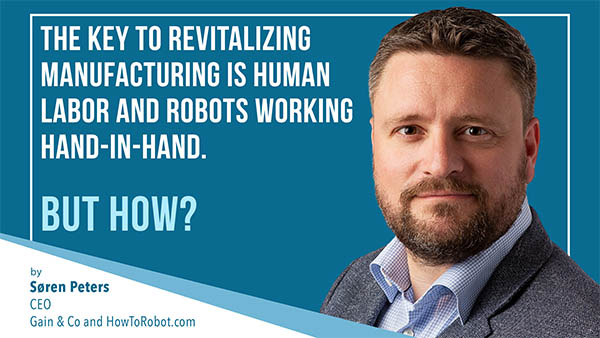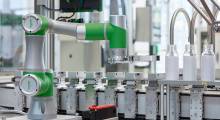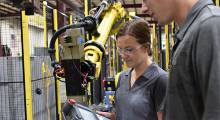Jobs and tasks change over time. This is true not just for manufacturing, but for any industry—and often for the better. Ice cutters from before the 1930s may have enjoyed the natural exercise that came with the job of sawing ice blocks off frozen lakes, but having freezers make ice cubes instead was likely seen by most people as a way forward.
The usual solutions within manufacturing no longer apply: Offering human laborers to work the same dirty, dull, and dangerous tasks day after day at a low salary isn’t working. Offering a higher pay helps, but still doesn’t solve the main problem. People aren’t finding manufacturing jobs as attractive as they once did, and outsourcing production to lower income countries is also off the table. COVD-19 showed us how important it is to have a local production that is less dependent on global supplies.
While many industries have gotten rid of the toughest jobs, manufacturing is still relying heavily on people for tasks that would be considered a no-go in other industries. At a fish processing plant, people spend their day with hands in ice cold water. At a pharmaceutical factory, people are lifting 25 kg (55 lb.) bags above shoulder height and emptying them into tanks continuously. At an electronics manufacturer, people sit for a full workday soldering the same component on hundreds of similar circuit boards.
It is not surprising that younger generations, upon seeing this, seek employment elsewhere. Their expectations for what work can provide them in addition to a salary is changing. Is work meaningful—or at least not wearing me down? Does it help me develop my skills? Is the social life good?
If you can’t answer these questions as a manufacturer, recruiting is not going to be easier.
As with the ice cutters from the beginning of the last century, perhaps it is time to reconsider what a manufacturing job should be— and what jobs are better left to machines.
Technology may only be half of the answer
The good news is that manufacturers are already working hard on these changes. In recent years, robots and automation have found their way into many new factories, taking over the most menial tasks: putting things in boxes, stacking them on pallets, feeding machines with raw materials, welding, and a wide range of other things.
Automation leaves people with the opportunity to take on more demanding and meaningful tasks. The welder is still the person who knows their craft the best. As a robot supervisor, they can monitor the machine, ensure the quality is still at a high level, and perform the most complicated welding. However, no longer are they required to carry the torch alone for a full day.
This is at least what work looks like in the ideal world. However, robotics as a field is still relatively young, especially outside of the heavy manufacturing industries. As with any large technological advancement, change is difficult. Leaders struggle to understand how to deal with the technology, and the people that need to operate it lack the skills to do so. Many are fearing the technology, simply because they lack knowledge about it.
As a result, we very often see otherwise promising projects derail. Robots gather dust in the corners of factories or do not deliver what was expected, causing people to lose faith in the technology. Often, this could have been avoided.
Dealing with the unknown isn’t easy
As with anything new, getting a good grasp of technology takes time. But often, in the hopes of blending in, we pretend to know it all from the beginning. This is particularly true for a field such as robotics, where technologies are advancing extremely fast—what seemed impossible yesterday, suddenly becomes a possibility.
The simple truth is that robotics is hard. When you haven’t experienced failure and seen the real-life possibilities and limitations of the technology, how do you navigate around the many pitfalls?
As a newcomer, where do you start? Where does automation make sense—and where is it bound to fail? A robot may look impressive at a trade show, but how do you know if it can deliver what you need, day after day, year after year? And what skills are needed to keep it running?
Any manufacturers that have done something about their situation will eventually face these questions. Their situation is similar to companies that adopted IT in the late 90’s trying to figure out how to spend their money wisely on the technology. Often, admitting to not knowing is the real obstacle to overcome. There are many experts who will claim to have the answers, but only a few understand what the real needs and challenges are. It all starts with acknowledging where you are and where you are going.
It is easy to hope that things will go back to the way they were before. When the waters are stormy, simply waiting for it to pass may seem like the easiest option. Except, in this case, there are no clear signs of the storm passing: The industry as a whole has an image problem. Getting more people back to work at manufacturing jobs will not happen unless perceptions change.
About the author
Søren Peters is the CEO at Gain & Co and HowToRobot.com. This post was republished from Howtorobot.com with permission.
Article topics
Email Sign Up

















